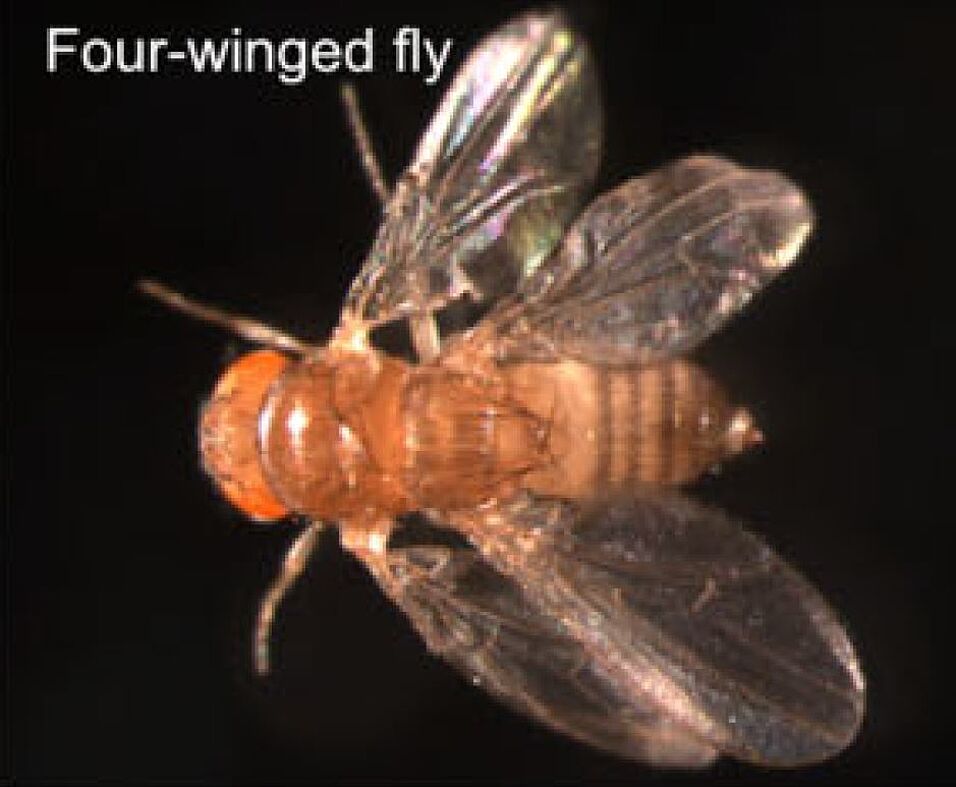Tögel M, Pass G & Paululat A. 2021.
iyab191, doi.org/10.1093/genetics/iyab191. Link. Published 15 November 2021
Abstract
Wings are probably the most advanced evolutionary novelty in insects. In the fruit fly Drosophila melanogaster, proper development of wings requires the activity of so-called wing hearts located in the scutellum of the thorax. Immediately after the imaginal ecdysis, these accessory circulatory organs remove hemolymph and apoptotic epidermal cells from the premature wings through their pumping action. This clearing process is essential for the formation of functional wing blades. Mutant flies that lack intact wing hearts are flightless and display malformed wings. The embryonic wing heart progenitors originate from two adjacent parasegments corresponding to the later second and third thoracic segments. However, adult dipterian flies harbor only one pair of wings and only one pair of associated wing hearts in the second thoracic segment. Here we show that the specification of WHPs depends on the regulatory activity of the Hox gene Ultrabithorax. Furthermore, we analyzed the development of wing hearts in the famous four-winged Ultrabithorax (Ubx) mutant, which was first discovered by Ed Lewis in the 1970s. In these flies, the third thoracic segment is homeotically transformed into a second thoracic segment resulting in a second pair of wings instead of the club-shaped halteres. We show that a second pair of functional wing hearts is formed in the transformed third thoracic segment and that all wing hearts originate from the wild-type population of wing heart progenitor cells.

